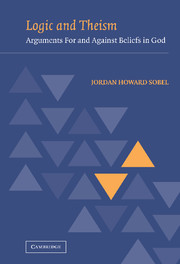I - ‘God’, ‘god’, and God
Published online by Cambridge University Press: 28 July 2009
Summary
If we have no idea what God [would be], then what sense is there in asking whether God exists or not?
(Peterson et al. 1991, p. 49)EXISTENCE AND ESSENCE QUESTIONS
This book would be about God, that is, it is about God, supposing This One exists. But since this book would be about God, it is appropriate to begin by saying something about what this book would be about. For, to say it would be about God is not so much to say as to advert or point. ‘God’, after all, is a proper name. And it is for proper names to name, not to describe. Generally we have descriptions in mind when we use names, but people can, when they converse, have in mind different descriptions. And although this need not make trouble for the identifying functions of names, since different descriptions can pick out the same things, it does mean that communication is uncertain when the existence of things that people would speak of with a name is at issue.
People, when they use names, generally intend to name things, but they do not always succeed, and when it is a question whether a name does name, it becomes important to discussion that there be a shared understanding of the character of what it would name.
- Type
- Chapter
- Information
- Logic and TheismArguments for and against Beliefs in God, pp. 3 - 26Publisher: Cambridge University PressPrint publication year: 2003



